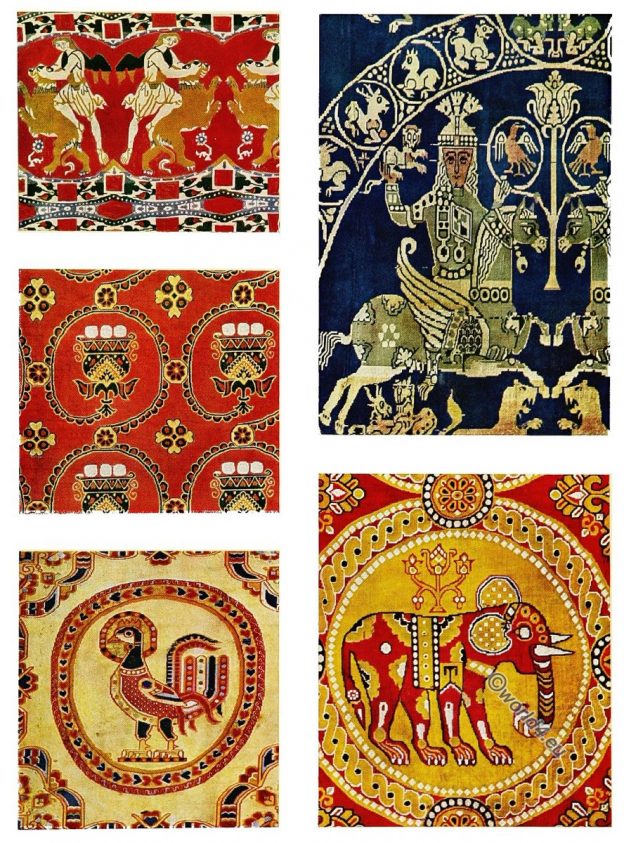Egyptian Art. Decorative Paintings.The Scarabaeus. The flowing ornaments from Thebes. Red, blue, and yellow were the principal colors employed.
Tag: Decoration
Wall Papers, designed by Walter Crane, 1918.
Fig and Peacock. Golden Age. Wood Notes.
Japan shippō-yaki design. Cloisonné enamel.
Japan shippō-yaki design. Three segments of a circular border. Cloisonné enamel.
Antique Fabrics from Egypt. Coptic Silks. Silks from Alexandria.
Antique Fabrics. Red silk, patterned with figures of Samson and the Lion. Fabric with elephant pattern. Fabric with cock pattern, Persia.
Traditional costumes and customs of Lithuania. The peasant folkart.
The peasant art of Lithuania. The Lithuanian women wore long wide robes of wool or linen embellished with a relief-like floral ornament. The costume of the men consisted of a long home woven woolen coat of a dark-blue or grey color, resembling in cut and fold the jacket of the women.
Terra di Lavoro. Two woolen carpets. Italy 18th c.
Two woolen carpets of the “Terra di Lavoro”
EDWARD III, King of England and Wales. Anjou Plantagenet dynasty.
Edward III. from the Anjou Plantagenet dynasty, is considered one of the most important English rulers of the Medieval times.
Embroideries and decorative objects of the Breton peasants.
Brittany. Traditional Jewellery. Embroidery of the chupen; the gouriz, the corquen. Antique bronze fibulae.
Al-Andalus. The Conquest of Granada. Boabdil el Chico’s Farewell.
Conquest of Granada. Boabdil el Chico’s Farewell by Washington Irving.
Apache medicine shirts. The medicine-men of the Apache.
Apache medicine shirts. The medicine-men of the Apache by John Gregory Bourke. Smithsonian Institution. Bureau of American Ethnology.










